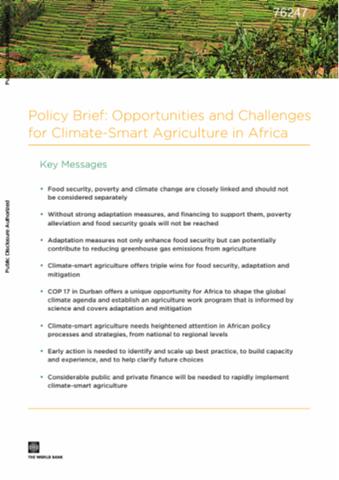Resource information
Agriculture is the economic foundation of many Sub-Saharan Africa (SSA) countries, employing about 60 percent of the workforce and contributing an average of 30 percent of gross domestic product. Yet agricultural growth rates for SSA declined in the 2000 and food insecurity remains a concern, with malnourishment only dropping from 34 to 30 percent in two decades. Various projections suggest that food production must increase by 70-100 percent by 2050 to meet the demands of a world with 9 billion people and changing diets. In SSA this will require considerable investments in agricultural development-research, institutional support and infrastructural development. Ensuring food security under a changing climate is one of the major challenges of our era. African agriculture is highly vulnerable to climate change. Climate-smart agriculture seeks to increase productivity in an environmentally and socially sustainable way, strengthen farmers' resilience to climate change, and reduce agriculture's contribution to climate change by reducing greenhouse gas emissions and increasing carbon storage on farmland. Climate-smart agriculture includes proven practical techniques-such as mulching, intercropping, conservation agriculture, crop rotation, integrated crop-livestock management, agroforestry, improved grazing, and improved water management-but also innovative practices such as better weather forecasting, early warning systems and risk insurance. Climate-smart agriculture fully incorporates attention to climate risk management. Climate-smart agriculture offers some unique opportunities to tackle food security, adaptation and mitigation objectives. African countries will particularly benefit from climate-smart agriculture given the central role of agriculture as a means to poverty alleviation and the major negative impacts that climate change is likely to have on the African continent.


